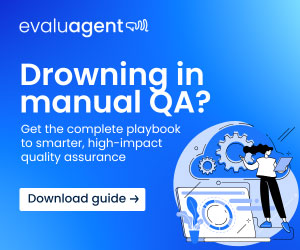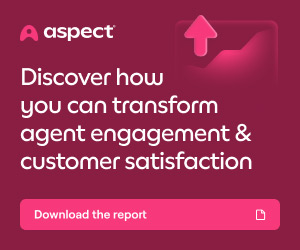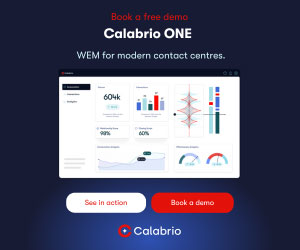Improving customer satisfaction doesn’t always require a full-scale transformation. In fact, small, thoughtful changes often make the biggest difference.
To find out more, we asked Jonathan “Kenu” Escobedo, Customer Success Manager at Miarec, to outline seven practical tips to lift your CSAT scores without overhauling your entire contact centre strategy.
Video: Improve CSAT: Small Adjustments Can Make a Big Difference to CSAT
Watch the video below to hear Jonathan explain how contact centres can improve CSAT by making small adjustments that make a big difference:
With thanks to Jonathan “Kenu” Escobedo, Customer Success Manager at Miarec, for contributing to this video.
This video was originally published in our article ‘Quick Wins to Improve Your C-Sat Scores’
7 Ways to Boost Customer Satisfaction Scores
Every interaction is an opportunity to either delight or disappoint, and even small improvements in these areas can lead to big gains in CSAT.
“Improving your customer satisfaction scores doesn’t require massive changes. Small, mindful adjustments can make a world of difference.”
If you’re looking to lift your CSAT scores without overhauling your entire contact centre strategy, these seven practical tips will help you get there, quickly and effectively:
1. Reduce Response Times
“First, reduce response times. Speed matters, long wait times lead to frustration, so prioritize fast and efficient responses across live chat, email or phone support to ensure customers feel prioritized.”
Speed is one of the top drivers of customer satisfaction. Long wait times, whether via live chat, email, or phone, are a fast track to frustration.
- Prioritize rapid response across all channels.
- Use smart routing, chatbots, and queue management tools to reduce bottlenecks.
- Ensure that SLAs for response times are monitored and met consistently.
When customers feel acknowledged and served quickly, their experience improves dramatically.
2. Simplify Self-Service
“Second, simply self-service. Make your FAQ page, chatbot, and/or IVR system easy to navigate so customers can easily find answers without jumping through hoops.”
A great self-service experience should feel effortless, and if customers have to dig for answers or navigate clunky menus, it defeats the purpose.
- Ensure your FAQ page is well organized, searchable, and up-to-date.
- Optimize your IVR flow and chatbot scripts for clarity and simplicity.
- Use analytics to identify which questions are being asked most, and address those prominently.
A smooth self-service journey empowers customers and reduces strain on your agents.
3. Empower Your Agents
“Third, empower your agents. Equip them with the tools, training, and authority to resolve issues on the spot. A well-prepared agent can turn a customer’s frustration into delight.”
Frontline agents play a critical role in shaping the customer experience, and when they’re undertrained or restricted by rigid processes, satisfaction takes a hit.
- Provide agents with comprehensive training, up-to-date documentation, and access to customer data.
- Give them the authority to resolve issues without needing constant escalations.
- Equip them with tools that provide real-time assistance, such as agent assist platforms or knowledge bases.
An empowered agent can turn a potentially negative experience into a positive one, often in a matter of minutes.
4. Personalize the Experience
“Fourth, focus on personalization. Customers want to feel valued, and a simple greeting like “Hi this is Kenu speaking, may I ask who I have the pleasure of speaking with?” shows you care.
And if you are struggling to track this consistently, AI-powered tools like automated quality assurance can help.”
Even small moments of personalization make customers feel seen and valued.
- Train agents to use names and personalized greetings (e.g. “Hi, this is Kenu speaking. May I ask who I have the pleasure of speaking with?”).
- Use CRM data to tailor responses based on purchase history, previous interactions, or preferences.
- Implement AI-powered QA tools to track personalization consistently across interactions.
Personalization doesn’t have to be complex, but it should always be intentional.
5. Keep Communication Clear
“Next, keep communication clear. Avoid industry jargon and acronyms that might confuse your customers. A clear concise message ensures they understand you, and you understand them.”
Clarity is essential to avoid misunderstandings and frustration.
- Avoid technical jargon, internal acronyms, or overly complex explanations.
- Encourage agents to communicate in plain, customer-friendly language.
- Use call scripts and QA tools to identify and coach around confusing language patterns.
Clear, simple communication helps customers feel informed and respected.
6. Focus on First Contact Resolution (FCR)
“Sixth, focus on First Contact Resolution. Customers don’t want to repeat their issue or be transferred multiple times, so use analytics tools to track FCR and train your team to resolve issues on the first try. It saves time and leaves a lasting positive impression.”
Customers don’t want to repeat their story or be transferred repeatedly, so first contact resolution is both efficient and satisfying.
- Use analytics tools to track FCR and uncover pain points.
- Train agents to probe thoroughly so they can solve the full issue, not just the surface request.
- Invest in systems that provide a 360° view of the customer journey, enabling faster, more accurate service.
A high FCR rate correlates strongly with customer satisfaction and loyalty.
7. Leverage AI for Feedback and Improvement
“And finally, leverage AI tools to gather feedback and act on it. AI-powered solutions like automated quality assurance, sentiment analysis, topic analysis, and fully customizable AI insights let you identify trends, monitor agent performance, and understand customer needs and sentiment.
Most importantly, take action on this feedback. Create data-driven agent training to improve customer interactions.”
Gathering customer feedback is critical, but acting on it is where the real value lies.
- Use AI tools like automated quality assurance, sentiment analysis, and topic modelling to monitor interactions.
- Identify trends in agent performance and recurring customer concerns.
- Build data-driven training programmes that address the insights you uncover.
When you show customers that their feedback leads to improvements, trust and satisfaction grow.
If you are looking for more great insights from the experts, check out these next:
- How to Spot and Solve Common Customer Issues
- How to Bring Scheduling Into the Digital Age
- 5 Strategies to Maximize the Value of Your CCaaS Solution
- Two Strategies to Improve First Contact Resolution (FCR)
Author: Robyn Coppell
Reviewed by: Xander Freeman
Published On: 4th Sep 2025 - Last modified: 25th Sep 2025
Read more about - Video, Customer Satisfaction (CSAT), Jonathan Kenu Escobedo, MiaRec, Videos





































